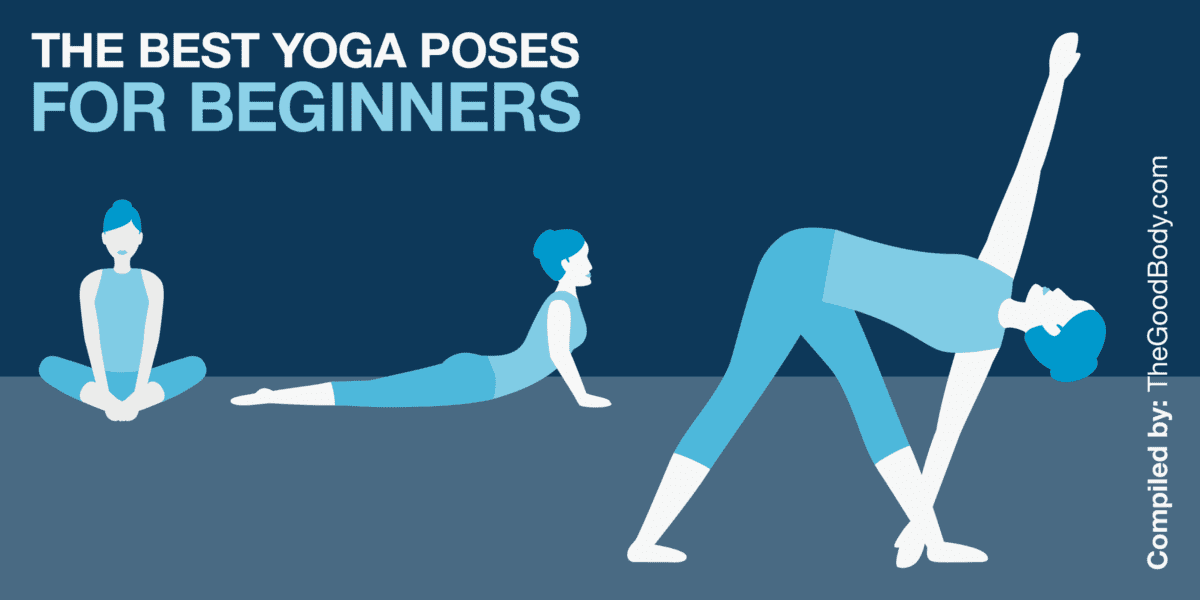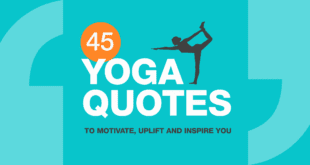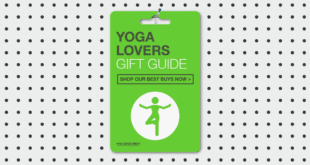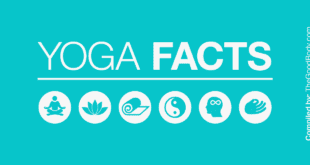You’ve heard all about the amazing health benefits of yoga, but now you’re wondering where to start!
We’ve sought the advice of experienced yogis and reviewed all the research to compile a list of simple asanas.
In this article you’ll find poses perfect for beginners, to build strength, improve your flexibility and develop a deeper connection with your inner self.
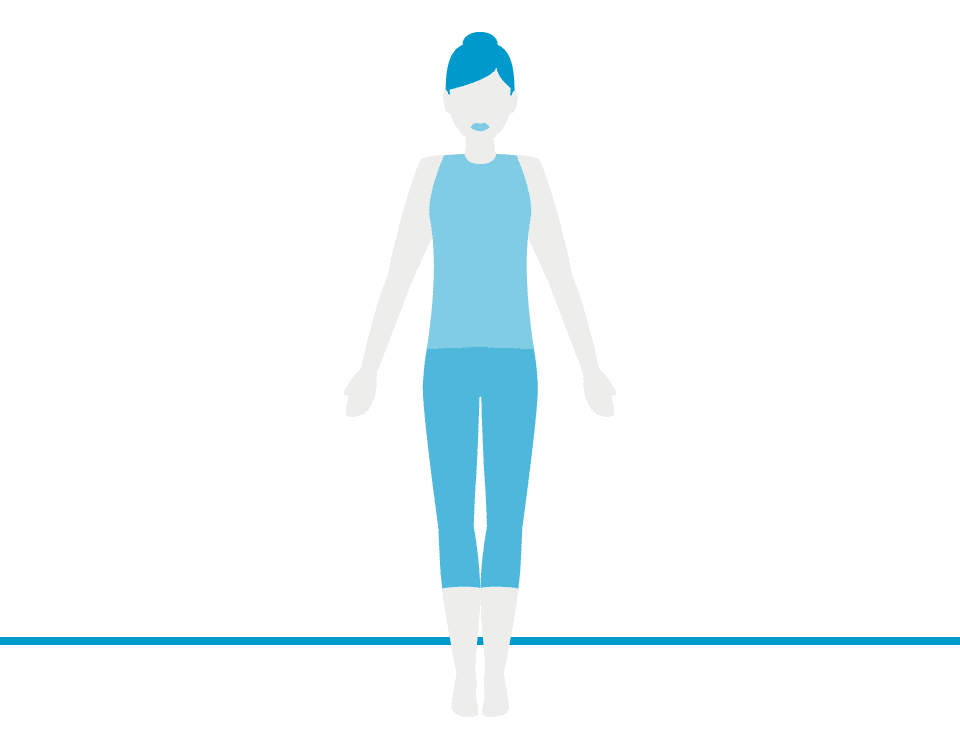
1. Mountain (Tadasana)
It might look like you’re simply standing with your arms at your side, but this is a powerful one as it lays the groundwork for all the future positions you’re going to master.
Tadasana has a huge array of advantages, with one of the most important and valuable ones being good posture, a real cornerstone of yoga practice.[1]
There is also evidence to show that tadasana can be beneficial for people living with arthritis.[2]
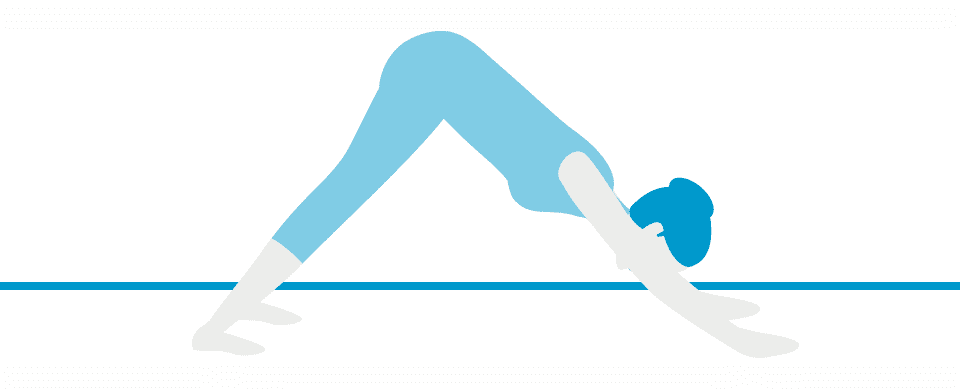
2. Downward Facing Dog (Adho Mukha Svanasana)
Even if you’re completely new to yoga you’ll certainly have heard of this posture.
It’s an important beginners’ pose, even if you need to make a few little adjustments.
In yogi Gail Boorstein Grossman’s book Restorative Yoga for Life she uses her expertise to demonstrate a restorative version.
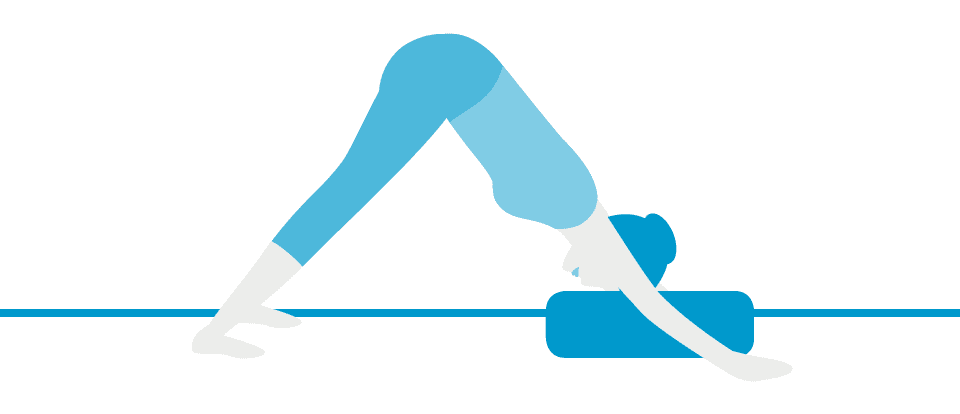
She describes how it’s a staple of any class and ideal for newcomers, or those with back troubles who are desperate to find asanas for back pain.
The version incorporates a bolster which can relieve any back discomfort and put you in a state of complete relaxation.
Restorative poses might just seem like a great way to unwind, and they definitely are!
However research into the advantages of restorative yoga shows it can also calm your nervous system and help to prevent Type 2 diabetes.

Pin it for later!
Don’t forget to pin these poses for later!
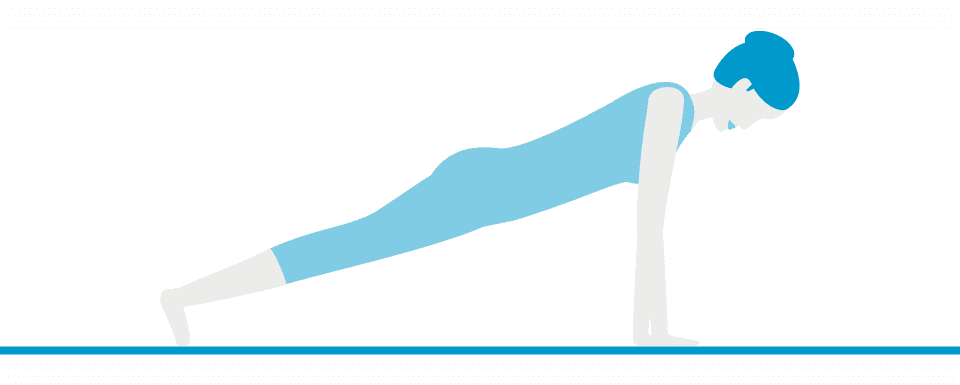
3. Plank (Phalakasana)
Plank is perfect for building strength in your arms and abdominal muscles, strength you’ll need to take your practice to the next level.
It forms part of the Sun Salutation series, a graceful flow of movements that develop flexibility. Phalakasana also tones your core and improves your posture.
Clinical research has shown that performing planks decreases cortisol, also known as the ‘stress hormone’![3]
Making it the perfect pose for anxiety and depression.
See the video below for how to perform the movement correctly:

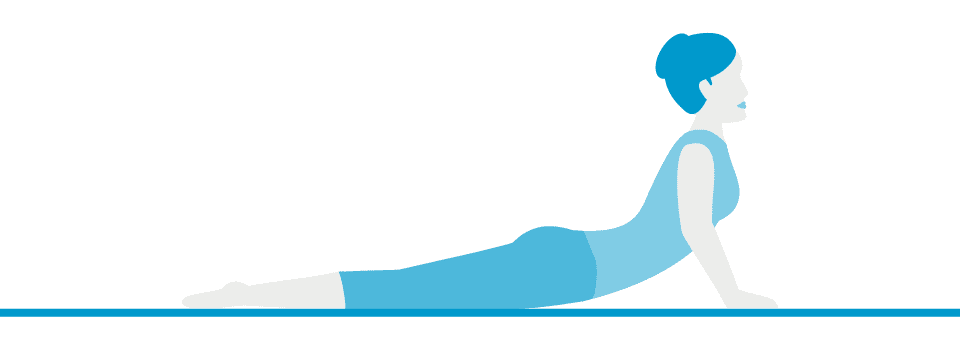
4. Cobra Pose (Bhujangasana)
You’ll need to master backbends as part of your journey and cobra is a good one to start with.
The name comes from the Sanskrit word ‘bhujanga’, meaning snake or serpent.
Imagine yourself as a cobra with your hood raised!
Instructors describe it as a baby backbend, and a great way to transition into more difficult positions such as the upward bow.
Yogis also recommend easing into the form by lifting your body slowly off the floor.[4]
Practicing continually will build your suppleness, ideal if you’re looking for yoga to improve your flexibility.
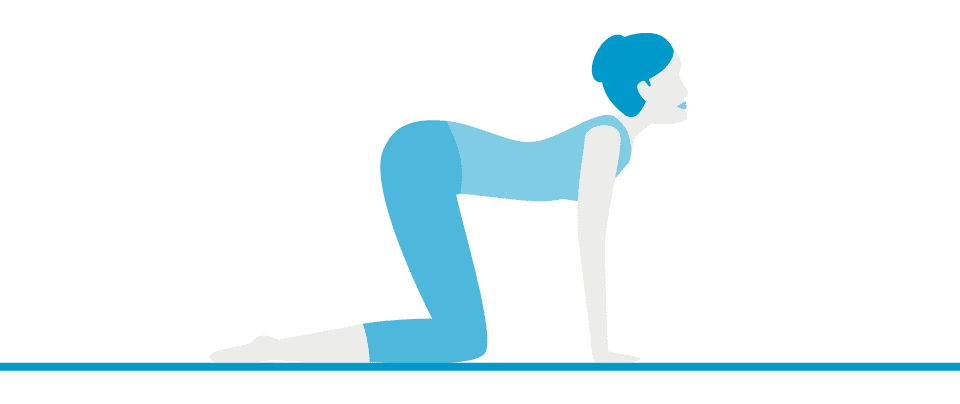
5. Cat-Cow (Chakravakasana)
Elongating and maintaining your spine is such an essential part of the practice, and this stretch is a good one to start with.
It’s also seen as a good way to relax and unwind after a difficult day.
If you’re trying yoga to help with a chronic pain disorder such as fibromyalgia, chakravakasana has many merits.
Watch the video below to learn how to get the most from the pose:

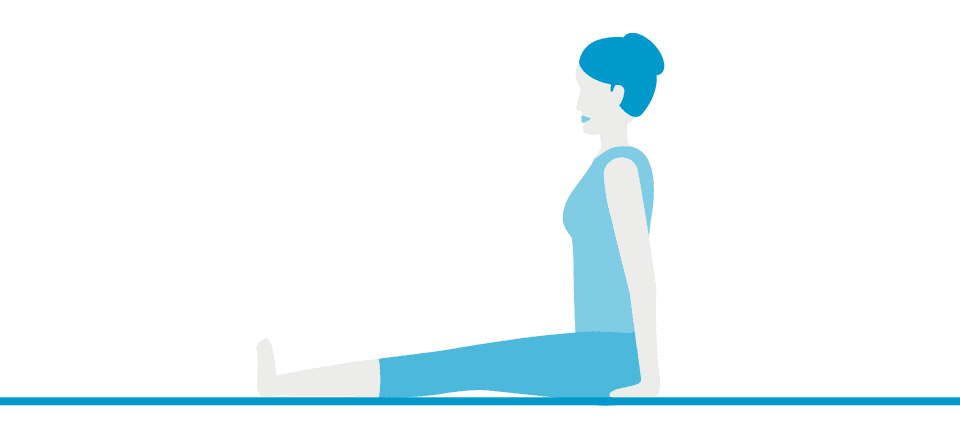
6. Staff Pose (Dandasana)
Staff is another asana that gets to work on your posture.
Yoga teacher Luke Ketterhagen explains that the positioning:
…strengthens the deep muscles of the lower back, the abdomen, and the muscles deep in the pelvis.[5]
Building power in your core muscles and lower back can help with improved posture.
It’s a simple position that builds a foundation for other positions that involve the lower back muscles.
You can also try putting aside your mat when practicing this one.
Experts at the BioMedical Institute of Yoga and Meditation believe that it can have “grounding” qualities when practiced ‘on earth’.[6]

7. Supported Bridge (Setu Bandha Sarvangasana)
Practice a variation to the classic bridge by adding a brick.
Instructor and Ayurveda practitioner Travis Eliot describes the movement as “cooling and passive” making it a wonderful asana for relaxing at the end of your session.
In his book A Journey into Yin Yoga, he recommends holding the form for between 3 to 5 minutes, or longer if you can.
He demonstrates how the supported bridge can begin to rebuild the spine, particularly for those suffering from back pain.
Eliot explains that the bolster or low block should be used to enable you to be as comfortable as possible to experience the full restorative benefits.
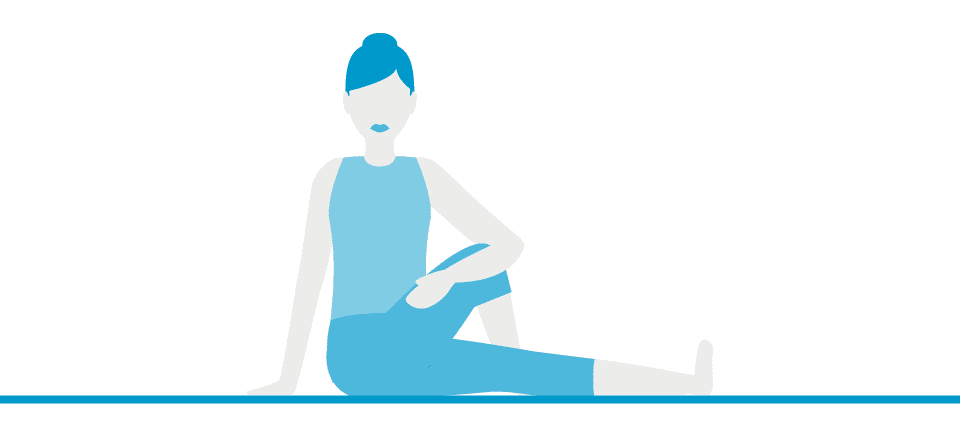
8. Seated Spinal Twist Pose (Ardha Matsyendrasana)
Build strength in your spine with the seated spinal twist.
Ardha matsyendrasana offers so many perks, allowing you to really stretch out your spine as well as improve your digestion.[7]
Though it might look complex as a newbie, it’s a straightforward one to master.
It’s also one to practice if you want to shed pounds by using yoga for weight loss.
In 2013, research was conducted on amateur female tennis players to understand how yoga can impact on basal metabolic rate.[8]
Ardha matsyendrasana was included in the sequence that participants followed for six weeks.
Results highlighted significant improvements in the metabolic rate of the women, and led to reductions in body mass index (BMI) and waist and hip circumference.
See below how to master the move:

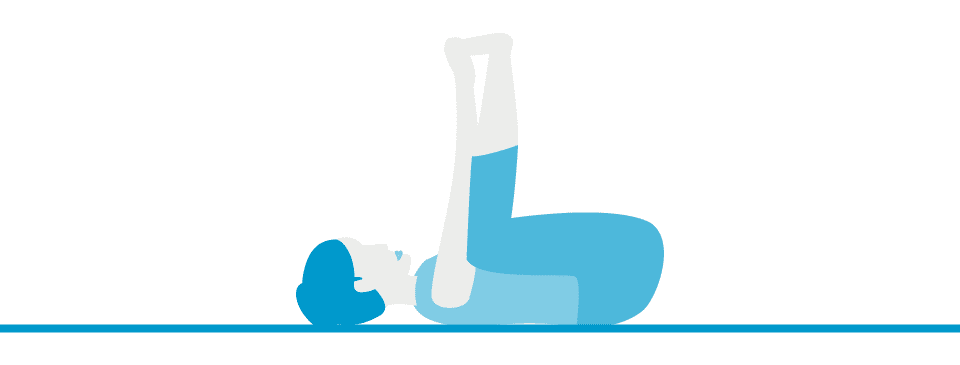
9. Happy Baby (Ananda Balasana)
Your hips are another area where you need to build strength if you dream of becoming a serious yogi.
Happy baby can loosen tight hip flexors enabling you to transition into difficult postures more easily.
Ananda balasana is also a great one for stretching your groin.
Follow step by step instructions to ensure you’re practicing the exercise correctly.
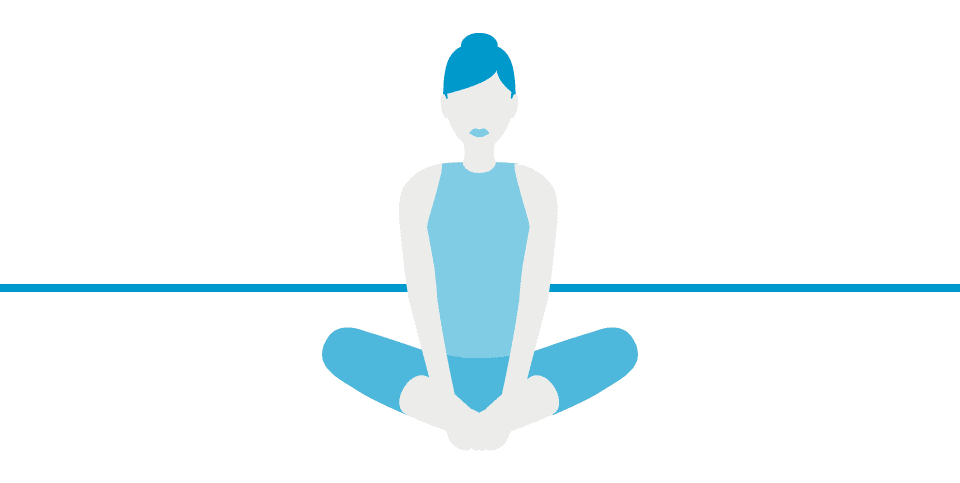
10. Cobbler’s Pose (Baddha Koṇāsana)
Complete novices will learn to love this pose!
The simple exercise is ideal if you want to experience the many health advantages of meditation, and perfect if you’re looking for basic asanas to get started.
It also gives you a deep stretch through your feet and loosens your hips which can be useful if you’re trying yoga for running.

11. Child’s Pose (Balasana)
Start to embrace your inner child during practice.
This kneeling posture is one of the simplest to master and can be used at any point during your routine.
Balasana is in fact so easy that it’s an exercise recommended for kids.[9]
It’s thought that the asana encourages a more relaxed state of mind.
Research also shows it can actually reduce both your blood pressure and pulse rate![10]
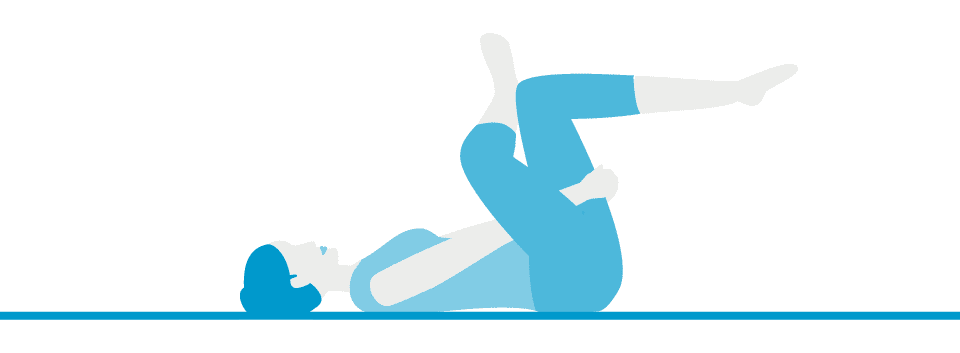
12. Supine Pigeon (Supta Kapotasana)
Begin learning how to open your hips by giving the supine pigeon a try.
It’s an easy hip opener that you can start to practice whatever your level of flexibility.
As a beginner you might struggle to get into the position fully, so practitioners will often advise using a strap around your leg.
Over time as your flexibility increases you’ll be able to enjoy even deeper stretches in your lower back and legs.

Pin it for later!
Don’t forget to pin these poses for later!
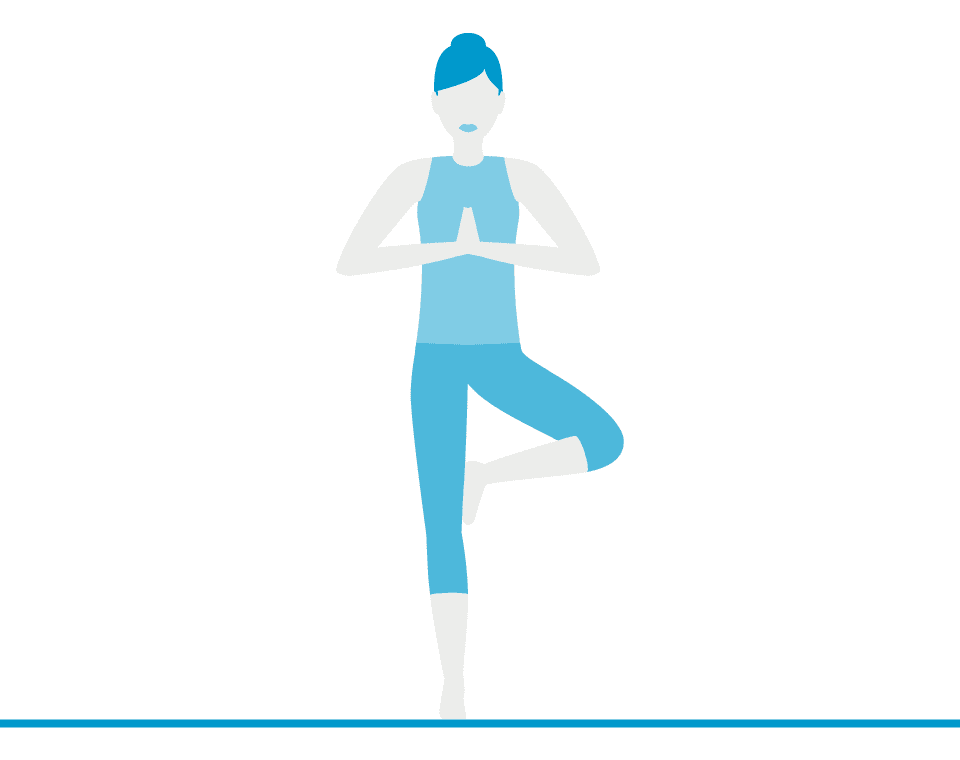
13. Tree (Vriksasana)
Maintaining your balance is key, so this is one you’ll really want to get to grips with.
Beginner tree pose is a slight modification and involves using a chair or wall until you have the stability to hold it fully.
B.K.S. Iyengar, founder of Iyengar Yoga, wrote in his book Light on Yoga that vriksasana “tones the leg muscles and gives one a sense of balance and poise”, important skills for any yogi in training.[11]
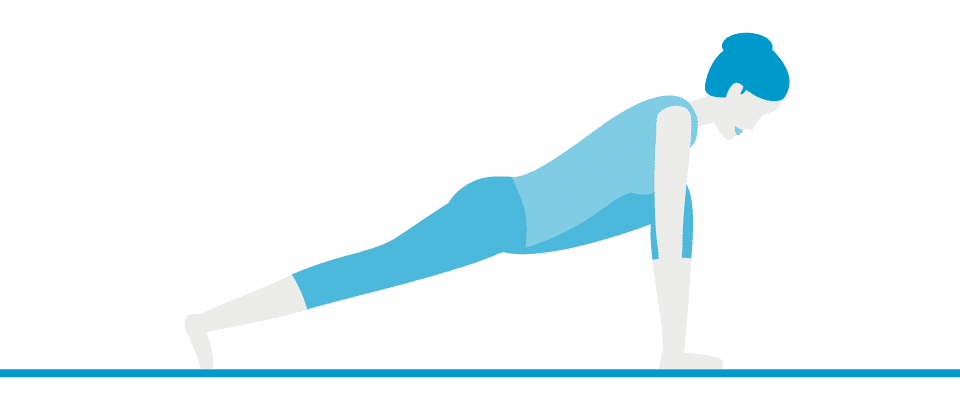
14. High Lunge (Utthita Ashwa Sanchalanasana)
Another way to build the power you need for more advanced asanas is the high lunge. It’s a basic hip opening posture that is simple to master.
Enjoy a stretch through your legs and release any tension in your lower back.
Lifestyle company, Yoga by Candace, demonstrate how to perform a high lunge.
They explain that the key to success is alignment and rooting yourself in to the mat properly to get the best possible balance.
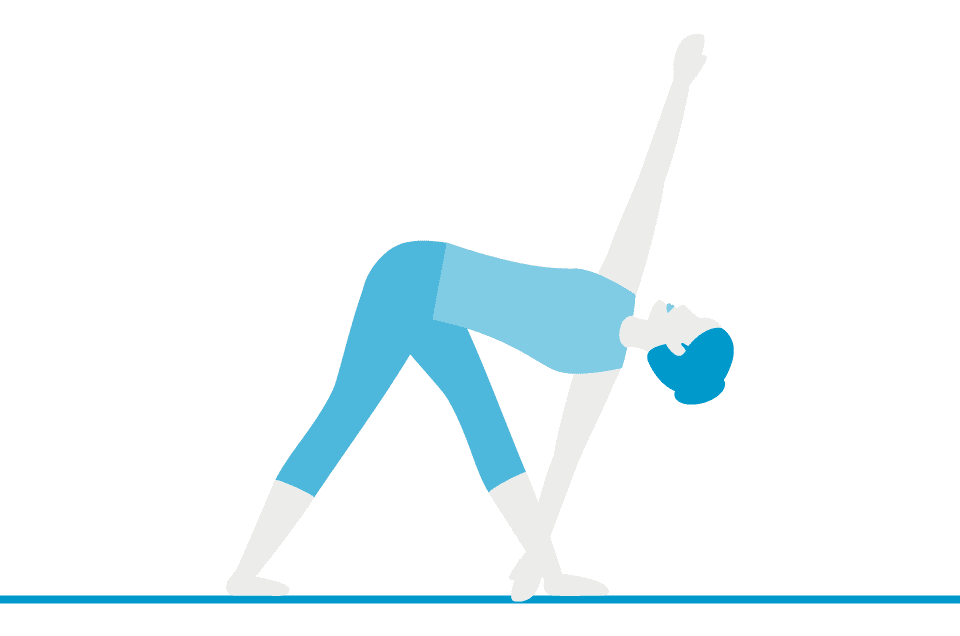
15. Triangle (Utthita Trikonasana)
The stance of this asana is essential for new yogis before they can move on to the more challenging standing poses.
In the aforementioned book Light on Yoga, B.K.S. Iyengar describes how powerful it can be for relieving any back or neck pain that you might be suffering with.
For beginners he explains how it also removes stiffness in the hips and legs, allowing you to loosen up and increase your flexibility.
Findings from Harvard Medical School indicate that utthita trikonasana, among a number of other asanas, are safe for women to practice in the late stages of pregnancy.[12]
Regular sessions can also alleviate feelings of discomfort and stress that can arise in the third trimester.
Another one of the incredible benefits of yoga for women!

16. Seated Forward Bend (Paschimottanasana)
Seated forward bend is another way for new yogis to start to build flexibility in their spine.
It’s a basic move, however certified instructor Charlotte Bell states how it requires patience to truly embrace its power.[13]
Rather than focusing on how far your head is from your knee, you should instead focus on your state of mind, giving yourself fully to the form and reaping the peaceful rewards.
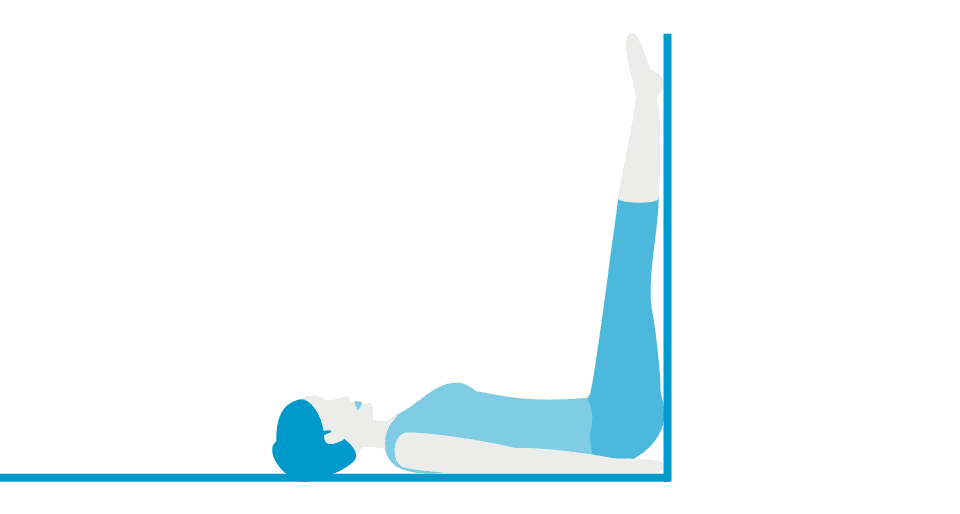
17. Legs-Up-The-Wall Pose (Viparita Karani)
Inversion poses, when the head is below the heart, can be challenging but rewarding.
Legs-up-the-wall is the perfect inversion for newcomers.
It’s a gentle, restorative position that is thought to provide as much rest as a short nap, so perfect if you’re desperate to find asanas for sleep.
However it’s essential that inversions are practiced correctly.
The headstand, another inversion pose, is thought to be the asana that causes the most injuries, according to the latest yoga statistics.
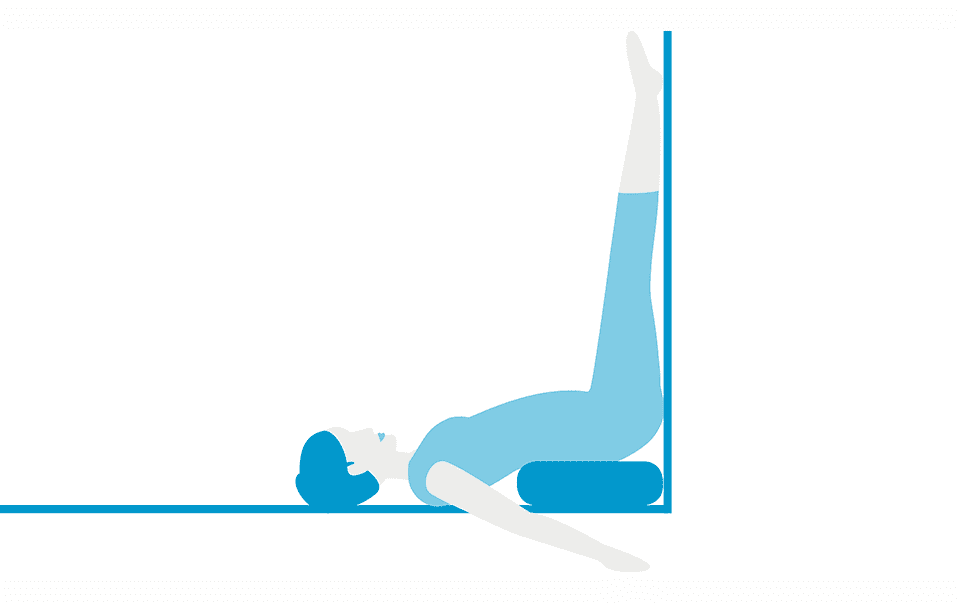
Consider using a bolster or other modification so you’re as comfortable as possible and not putting too much strain on your lower back.

18. Corpse Pose (Savasana)
Take any class and you’ll likely finish with the savasana. This restorative stretch is designed to put you in a state of full relaxation.
Even though it looks straightforward it can be difficult, especially for those suffering from back pain.
Try a supported version, by adding a bolster under your legs to take the pressure off your lower back.

Be inspired!
Another way to get inspired as you begin your journey is by following other passionate yogis online!
Read our article on the 11 best yoga Instagram accounts and influencers you need to follow.
References
- Art of Living (2018). Mountain Pose (Tadasana) [Online]. Available from: https://www.artofliving.org/us-en/mountain-pose-tadasana [Accessed 13 July 2023]. ↩
- Dudeja, J.P. (2019). Benefits of Tadasana, Zhan Zhuang and Other Standing Meditation Techniques [Online]. Available from: https://www.researchgate.net/publication/334680595_Benefits_of_Tadasana_Zhan_Zhuang_and_Other_Standing_Meditation_Techniques [Accessed 13 July 2023]. ↩
- Femestella (2021). 30-Day Plank Challenge: The Amazing Benefits of Planks [Online]. Available from: https://www.femestella.com/30-day-plank-challenge-the-amazing-benefits-of-planks/ [Accessed 13 July 2023]. ↩
- Raj Yoga Rishikesh (2017). Cobra Pose (Bhujangasana) [Online]. Available from: https://rajyogarishikesh.com/cobra-pose-bhujangasana.html [Accessed 13 July 2023]. ↩
- Ketterhagen, L. (2023). Dandasana: The Staff Pose [Online]. Yoga International. Available from: https://yogainternational.com/article/view/dandasana-the-staff-pose/ [Accessed 13 July 2023]. ↩
- The BioMedical Institute of Yoga & Meditation (2021). Dandasana [Online]. Available from: https://biyome.com.au/yoga/asana-manual/dandasana/ [Accessed 13 July 2023]. ↩
- Art Of Living (2018). Sitting Half Spinal Twist (Ardha Matsyendrasana) [Online]. Available from: https://www.artofliving.org/us-en/sitting-half-spinal-twist-ardha-matsyendrasana [Accessed 13 July 2023]. ↩
- Yadav, S. and Tadang, M. (2013). Effect of 6-Week Yoga Asana on Basal Metabolic Rate of Novice Female Players [Online]. International Journal of Scientific and Research Publications. Available from: https://www.ijsrp.org/research-paper-0713/ijsrp-p19109.pdf [Accessed 13 July 2023]. ↩
- Namaste Kid (2023). Child’s Pose [Online]. Available from: https://www.namastekid.com/teaching-tools/childs-pose/ [Accessed 13 July 2023]. ↩
- Jabir, P.K., Sadananda, B. and Das K.S. (2017). Effect of Balasana on cardiac parameters among healthy medical students [Online]. National Journal of Physiology, Pharmacy and Pharmacology. Available from: https://www.njppp.com/fulltext/28-1502452526.pdf [Accessed 13 July 2023]. ↩
- B.K.S. Iyengar Yoga (2023). B. K. S. Iyengar - References - Books: Guruji [Online]. Available from: https://bksiyengar.com/modules/Referen/Books/book.htm [Accessed 13 July 2023]. ↩
- Harvard Health Blog (2015). Yoga in pregnancy: Many poses are safer than once thought [Online]. Available from: https://www.health.harvard.edu/blog/yoga-in-pregnancy-many-poses-are-safer-than-once-thought-201512298898 [Accessed 13 July 2023]. ↩
- Bell, C. (2018). Yoga Pose Primer: Paschimottanasana (Seated Forward Bend) [Online]. YogaUOnline. Available from: https://yogauonline.com/pose-library/yoga-pose-primer-paschimottanasana-seated-forward-bend/ [Accessed 13 July 2023]. ↩

